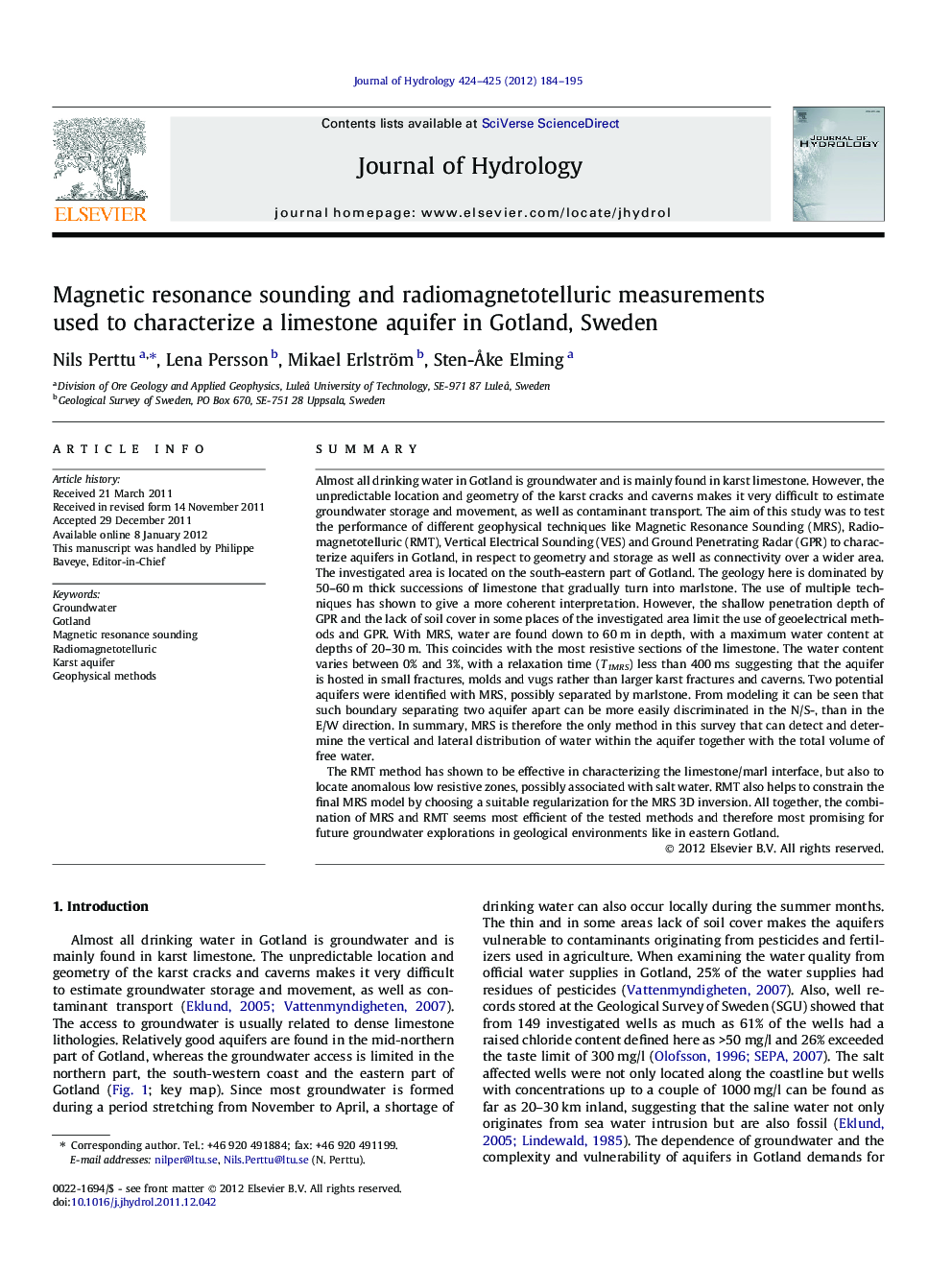| Article ID | Journal | Published Year | Pages | File Type |
|---|---|---|---|---|
| 4577108 | Journal of Hydrology | 2012 | 12 Pages |
SummaryAlmost all drinking water in Gotland is groundwater and is mainly found in karst limestone. However, the unpredictable location and geometry of the karst cracks and caverns makes it very difficult to estimate groundwater storage and movement, as well as contaminant transport. The aim of this study was to test the performance of different geophysical techniques like Magnetic Resonance Sounding (MRS), Radiomagnetotelluric (RMT), Vertical Electrical Sounding (VES) and Ground Penetrating Radar (GPR) to characterize aquifers in Gotland, in respect to geometry and storage as well as connectivity over a wider area. The investigated area is located on the south-eastern part of Gotland. The geology here is dominated by 50–60 m thick successions of limestone that gradually turn into marlstone. The use of multiple techniques has shown to give a more coherent interpretation. However, the shallow penetration depth of GPR and the lack of soil cover in some places of the investigated area limit the use of geoelectrical methods and GPR. With MRS, water are found down to 60 m in depth, with a maximum water content at depths of 20–30 m. This coincides with the most resistive sections of the limestone. The water content varies between 0% and 3%, with a relaxation time (T1MRS) less than 400 ms suggesting that the aquifer is hosted in small fractures, molds and vugs rather than larger karst fractures and caverns. Two potential aquifers were identified with MRS, possibly separated by marlstone. From modeling it can be seen that such boundary separating two aquifer apart can be more easily discriminated in the N/S-, than in the E/W direction. In summary, MRS is therefore the only method in this survey that can detect and determine the vertical and lateral distribution of water within the aquifer together with the total volume of free water.The RMT method has shown to be effective in characterizing the limestone/marl interface, but also to locate anomalous low resistive zones, possibly associated with salt water. RMT also helps to constrain the final MRS model by choosing a suitable regularization for the MRS 3D inversion. All together, the combination of MRS and RMT seems most efficient of the tested methods and therefore most promising for future groundwater explorations in geological environments like in eastern Gotland.
► We have tested MRS, RMT, VES and GPR to characterize a limestone aquifer. ► RMT locates the limestone–marl interface and helps to constrain the MRS inversion. ► The T1MRS of MRS suggests the aquifer to be hosted by small fractures and vugs. ► No real correlation between water content and resistivity exist. ► MRS is hence the only method that measure water and hence the extension of the aquifer.
